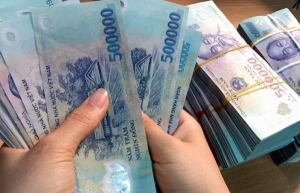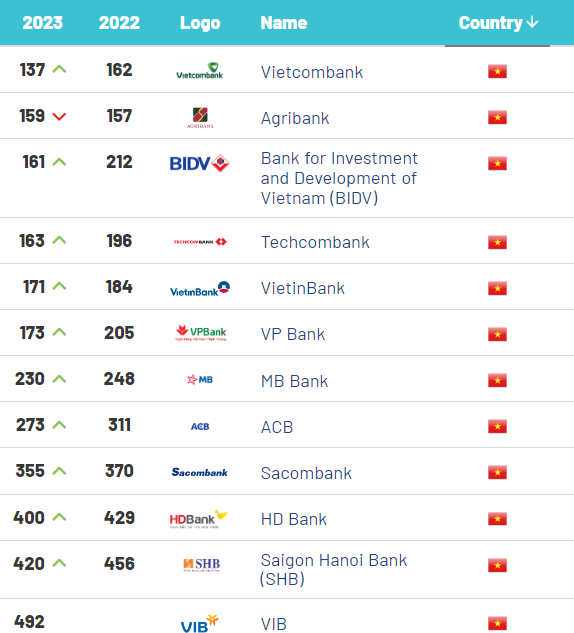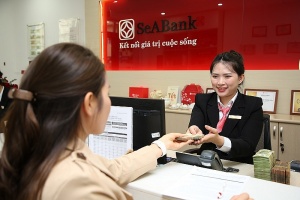Vietnamese banks urged to embrace green financing
 |
What is the role of banks in green growth?
Banks will have a crucial role in driving green growth in Vietnam. One of the main roles will be enabling project financing. Billions of dollars worth of investments will flow into the renewable energy sector over the next few years. Banks will help facilitate that flow. This is critical moving forward.
Over the past five years, Vietnam has issued $220–230 million of green bonds. On a cumulative basis, three other countries, namely Indonesia, Thailand, and Malaysia, have issued over $40 billion of green bonds in the same period. The issuance of those bonds is done by banks.
What we've observed in these countries is the setup of a clear regulatory framework that provides the ability to issue those bonds on a larger scale. This has not been at the top of the list of priorities for banks in Vietnam, which are focusing on other essential things.
What can the Vietnamese banking sector do to accelerate green growth?
I think it needs to be part of the priority and strategic agenda of banks moving forward. This means that they will have to build and structure their approach to financing green projects. This will lead to building more ties and relationships with other stakeholders as part of that financial ecosystem, whether those are international banks or investors. Banks should also build capabilities in credit scoring and risk management.
A few large banks in Vietnam have a strong focus on green financing. What we've observed in other countries is that when banks start doing green financing at scale, they increase their share in the portfolio rapidly. We've seen this happen in Indonesia, for example, where one bank started to issue green bonds and the project really took off.
What opportunities can Vietnamese banks tap into?
Besides project financing, there are also additional areas for banks, such as capital markets linked to environmental, social, and corporate governance. In terms of transaction banking, this involves trade finance and how big corporations transact with small- and medium-sized enterprises, and how these transactions are financed by banks.
The overall opportunity for banks lies in what we call revenue pools. This could generate banking revenues of $1.7 billion if Vietnamese banks could embrace this area. Looking at the entire potential of green financing, Vietnamese banks can benefit greatly. It's not only something they need to do for environmental reasons, but it's also something that could benefit them from a revenue perspective. Furthermore, the green transition is also leading to innovation within the banking sector, with new products and services in both retail and corporate banking.
What are your recommendations for Vietnam to achieve its net-zero target by 2050?
It is feasible to achieve net-zero with current technology, but without digital and technical innovation, progress will be slower and more costly. Vietnam can leapfrog in three greentech "game-changer" markets: renewable power, green-tech clusters and cutting-edge green fuels. Among them, renewable power is the foundation for green industrial clusters and green hydrogen.
Accordingly, renewable power maximises current cutting edge clean-tech advances, and digital tools which unlock efficient grids, to provide clean power for Vietnam. Vietnam has unique competitive advantages in renewables. Meanwhile, green tech clusters scale up existing industrial hubs by transitioning established industries into greentech industries (e.g., data centers, green hydrogen, and green commodities based on high-tech manufacturing processes).
Finally, alternate and green fuels produce green hydrogen or ammonia for both domestic use and export to East Asian countries (China, South Korea, and Japan), using electrolyser technology.
 | Banks urged to reduce costs to cope with NIM drops To ensure net interest margin (NIM), banks are often choosing to raise output interest rates for borrowers but reduce the ability to fulfill debt obligations, while the central bank has also requested cuts in admin and expenses. |
 | Vietnamese banks perform well with brand value growth of 31.3 per cent Vietnamese banking brands have posted an overall growth of 31.3 per cent in brand value, amounting over $2 billion compared to their 2022 positions. This is according to Brand Finance’s Banking 500 2023 report, which ranks the world’s top 500 most valuable and strongest brands in the banking industry. |
 | Study reveals Vietnam’s banks need more women in leadership roles While women make up 60 per cent of the entry-level workforce in Vietnam’s banks, less than a third make it to senior management positions, according to a new study by the International Finance Corporation (IFC) in partnership with the State Bank of Vietnam (SBV). |
What the stars mean:
★ Poor ★ ★ Promising ★★★ Good ★★★★ Very good ★★★★★ Exceptional
 Tag:
Tag:
Related Contents
Latest News
More News
- Gold market reform advances as SBV receives applications for bullion production (December 30, 2025 | 12:07)
- EVN and AFD sign credit agreement for Vietnam’s first pumped storage hydropower plant (December 30, 2025 | 10:06)
- Techcombank Priority Visa Signature unlocks a higher standard of living (December 29, 2025 | 16:44)
- Tax sector wraps up 2025 and sets priorities for next year (December 25, 2025 | 14:00)
- A tipping point for digital and hybrid wealth management in Vietnam (December 23, 2025 | 13:33)
- $250 million deal targets women-owned SMEs, sustainable agriculture (December 22, 2025 | 17:40)
- Stock market posts resilient 2025 performance (December 19, 2025 | 18:17)
- Citi Vietnam receives 2025 AmCham CSR recognition (December 19, 2025 | 16:35)
- As global green supply chain reshapes, will Vietnam be left behind? (December 19, 2025 | 08:00)
- Banks gear up for massive capital increases (December 18, 2025 | 17:04)






















 Mobile Version
Mobile Version